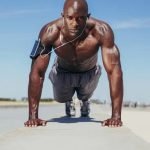Regular physical activity and exercise can provide numerous benefits for people with disabilities. Not only can fitness improve strength, flexibility, and endurance, but it also has the potential to enhance emotional well-being, manage cardiovascular health conditions, improve balance and coordination, alleviate chronic pain and inflammation, and promote social inclusion. In this article, we will explore the importance of fitness for individuals with disabilities and the various ways it can empower them to lead fulfilling lives.
For people with disabilities, engaging in regular physical activity is essential for maintaining overall health and well-being. Fitness not only strengthens muscles but also improves flexibility and endurance. Through consistent exercise routines tailored to their specific needs and abilities, individuals with disabilities can experience increased independence in their daily activities. This enhanced physical strength can allow them to have greater mobility and functionality in their daily lives.
Moreover, physical fitness plays a vital role in promoting positive mental health and self-confidence among people with disabilities. Engaging in regular exercise has been shown to reduce stress, anxiety, and depression while increasing feelings of happiness and self-worth. It provides an outlet for emotional expression while boosting self-esteem. By incorporating fitness into their routines, individuals with disabilities have the opportunity to nurture their mental well-being and bolster their overall quality of life.
Furthermore, regular exercise can contribute to managing cardiovascular health conditions that may be associated with certain disabilities. By strengthening the heart muscle through aerobic exercises such as walking or swimming, individuals with disabilities can improve circulation, lower blood pressure levels, and maintain a healthier weight. Taking appropriate precautions under medical supervision is crucial; however, incorporating regular physical activity into their lifestyle can significantly reduce the risk of heart complications.
The Physical Benefits of Fitness for People With Disabilities
Regular physical activity and exercise offer numerous physical benefits for individuals with disabilities. By engaging in fitness routines, people with disabilities can experience improvements in strength, flexibility, and endurance, leading to enhanced overall physical well-being. These benefits not only contribute to a healthier lifestyle but also empower individuals to engage more fully in their daily activities.
Improved Strength
Engaging in fitness activities that involve resistance training can significantly improve the strength of muscles for people with disabilities. Regular exercises such as weightlifting or using resistance bands can target specific muscle groups and promote muscle growth. Increased muscle strength provides individuals with greater stability and balance, making it easier to perform daily tasks and participate in recreational activities.
Enhanced Flexibility
Fitness activities that focus on stretching and range of motion exercises can help improve flexibility for individuals with disabilities. Stretching exercises aim to increase the length of muscles and tendons, making movements easier and more fluid. Enhanced flexibility can improve posture, reduce joint stiffness, and decrease the risk of injuries. Moreover, improved flexibility can make it easier to carry out essential movements such as reaching for objects or bending down.
Boosted Endurance
Regular cardiovascular exercise plays a vital role in improving endurance levels for individuals with disabilities. Activities such as swimming, cycling, or brisk walking increase heart rate and breathing efficiency, ultimately enhancing overall stamina over time. Improved endurance enables individuals to engage in physical activities for longer periods without fatigue or excessive exertion. This increased stamina not only improves one’s ability to participate effectively but also boosts energy levels for everyday tasks.
By focusing on these physical aspects through fitness routines tailored to individual needs, people with disabilities can experience significant improvements in their day-to-day lives while promoting independence and overall well-being. Engaging in regular exercise programs designed specifically for different disabilities ensures safe practices are followed while maximizing physical abilities.
Enhancing Emotional Well-being
The Link Between Fitness and Mental Health
Regular physical activity has long been associated with numerous mental health benefits, and this is no different for individuals with disabilities. Engaging in fitness activities can have a profound impact on emotional well-being, helping to alleviate symptoms of depression, anxiety, and stress. Exercise releases endorphins, often referred to as the “feel-good” hormones, which can improve mood and reduce feelings of sadness or tension.
Boosting Self-confidence
For individuals with disabilities, participating in fitness activities can boost self-confidence and self-esteem. Achieving personal fitness goals, whether it’s increasing strength or mastering a new yoga pose, can provide a sense of accomplishment and empowerment. Additionally, being part of a supportive fitness community can help individuals build connections with others who may share similar experiences and challenges.
An Outlet for Emotional Expression
Fitness also serves as an outlet for emotional expression for people with disabilities. Physical activity provides an opportunity to release built-up emotions and stress through movement. This can be particularly beneficial for individuals who may face communication barriers or difficulties expressing themselves verbally. Engaging in exercise allows them to channel their emotions into a productive and healthy outlet.
Reducing Symptoms of Co-occurring Disorders
Individuals with disabilities may also experience co-occurring mental health disorders such as attention-deficit hyperactivity disorder (ADHD) or autism spectrum disorder (ASD). Regular exercise has been shown to reduce symptoms associated with these conditions, including impulsivity, hyperactivity, aggression, and difficulty concentrating. Fitness activities that involve structured movements or repetitive actions can help calm the mind and provide a sense of focus.
Improving Cardiovascular Health
Regular exercise plays a crucial role in managing heart conditions for individuals with disabilities. People with disabilities often face unique challenges when it comes to maintaining cardiovascular health, but with the right modifications and support, they can still benefit from regular physical activity.
Engaging in regular exercise can help improve cardiovascular fitness, lower blood pressure, and reduce the risk of heart disease. It can also help individuals with disabilities maintain a healthy weight, which is important for overall heart health. In fact, according to the American Heart Association, people with physical disabilities who engage in regular aerobic exercise have significantly lower all-cause mortality rates compared to those who are sedentary.
An important aspect of managing heart conditions through exercise for individuals with disabilities is ensuring that the chosen activities are safe and appropriate. Depending on their specific condition and abilities, different types of exercises may be recommended.
For example, low-impact activities such as swimming or cycling may be more suitable for individuals who have joint issues or limited mobility. On the other hand, individuals with certain types of heart conditions may require more structured cardiac rehabilitation programs that include supervised exercise sessions.
In order to better understand the impact of regular exercise on cardiovascular health for people with disabilities, research studies have been conducted in this area. A study published in the Journal of Rehabilitation Medicine found that aerobic exercises like walking or wheelchair propulsion significantly improved cardiac function and reduced cardiometabolic risk factors among adults with disability.
Another study published in the American Journal of Physical Medicine & Rehabilitation showed that six months of aerobic exercise training resulted in significant improvements in endothelial function (the ability of blood vessels to dilate) among individuals with spinal cord injury.
| Benefit | Data |
|---|---|
| Lower all-cause mortality rates | American Heart Association |
| Improved cardiac function and reduced risk factors | Journal of Rehabilitation Medicine study |
| Enhanced endothelial function in individuals with spinal cord injury | American Journal of Physical Medicine & Rehabilitation study |
Enhancing Balance and Coordination
Physical activity and exercise play a vital role in enhancing balance and coordination for individuals with disabilities. Engaging in fitness activities can significantly improve motor functions, reduce the risk of falls, and promote overall stability. Here are some ways in which fitness positively impacts balance and coordination for people with disabilities:
- Strength Training: Incorporating strength training exercises into fitness routines can help improve muscle strength and enhance balance. Exercises such as squats, lunges, and leg presses can target specific muscle groups that contribute to stability.
- Flexibility Exercises: Regular stretching exercises can increase flexibility, which is essential for maintaining proper posture and balance. Stretching helps lengthen the muscles and tendons, improving joint mobility and reducing the risk of muscle imbalances.
- Balance Training: Specific balance exercises are designed to strengthen the core muscles involved in maintaining stability. Activities like standing on one leg, heel-to-toe walking, or using balance boards can help individuals develop better proprioception (awareness of body position) and control over their movements.
- Coordination Drills: Fitness activities that involve coordination drills can help individuals with disabilities improve their ability to synchronize movements between different body parts successfully. These drills often incorporate elements of agility and reaction time training.
By focusing on enhancing balance and coordination through fitness, individuals with disabilities can experience significant improvements in their ability to carry out daily activities independently while mitigating fall risks. Improved balance not only enhances physical functionality but also boosts self-confidence in various social settings.
In addition to traditional fitness approaches discussed above, many inclusive programs tailor workouts specifically for people with disabilities. These programs often employ adaptive equipment or modifications tailored to individual needs. It is important for individuals with disabilities to consult healthcare professionals or certified trainers who specialize in working with disabled populations to ensure proper guidance and support during physical activities.
Fitness has the power to transform the lives of people with disabilities by improving their motor functions, promoting independence, reducing fall risks, and enhancing overall quality of life.
Managing Chronic Pain and Inflammation
Chronic pain and inflammation are common challenges faced by individuals with disabilities. However, incorporating regular exercise into their routine can provide significant relief and promote healing. Exercise has been proven to be an effective tool in managing pain and reducing inflammation for people with disabilities.
Engaging in physical activity helps to increase blood flow and oxygen delivery to the muscles, which can reduce pain and inflammation. When individuals with disabilities participate in exercises that target specific muscle groups or joints, they can strengthen those areas and alleviate discomfort. Additionally, exercise releases endorphins, which are natural painkillers produced by the body, leading to a reduction in overall pain levels.
Furthermore, regular physical activity can help manage certain conditions such as arthritis or fibromyalgia, which often cause chronic pain and inflammation. Exercise helps maintain joint flexibility, preserves range of motion, and strengthens surrounding muscles to support the affected area. By engaging in low-impact exercises such as swimming or cycling, individuals can relieve stress from joints while still getting the benefits of physical activity.
Moreover, exercise promotes healing by stimulating the production of anti-inflammatory proteins in the body. These proteins help reduce swelling and aid in tissue repair. By incorporating exercises that target specific areas of concern for individuals with disabilities, they can actively promote the healing process of damaged tissues or inflamed joints.
The Social Benefits of Fitness for People With Disabilities
Fitness can offer a range of social benefits for people with disabilities, including the opportunity to build a supportive community and strengthen relationships. Physical activity can provide a platform for individuals with disabilities to connect with others who share similar experiences and interests. This sense of belonging and camaraderie can be especially valuable for individuals who may feel isolated or misunderstood due to their disability.
Engaging in fitness activities can help foster a sense of teamwork, cooperation, and friendship. Participating in group exercise classes or adaptive sports programs allows individuals with disabilities to interact with others in a positive and inclusive environment. These interactions can lead to the development of meaningful relationships and friendships that extend beyond the boundaries of the fitness setting.
In addition to building social connections, fitness can also help improve communication skills and self-confidence. Working out alongside others provides opportunities for individuals with disabilities to practice assertiveness, collaboration, and effective communication. Through these experiences, they can gain confidence in their abilities and develop stronger interpersonal skills that carry over into other areas of life.
A strong support system is crucial for anyone facing challenges or adversity, and this is particularly true for people with disabilities. Engaging in fitness activities not only offers physical benefits but also creates an environment where individuals can find encouragement, motivation, and understanding from others who are on similar journeys. The social benefits of fitness go beyond improved physical health-they contribute to overall well-being by fostering connections, building relationships, and ultimately enhancing quality of life.
| Social Benefits | Examples |
|---|---|
| Sense of Belonging | Opportunity to connect with like-minded individuals who share similar experiences. |
| Teamwork | Engaging in group exercises or adaptive sports promotes cooperation and teamwork. |
| Developing Relationships | Fitness activities provide a platform for individuals with disabilities to form meaningful friendships. |
| Improved Communication | Working out alongside others can help develop assertiveness and communication skills. |
| Supportive Community | Fitness activities create an environment of encouragement, motivation, and understanding. |
Overall, the social benefits of fitness for people with disabilities are immense. Beyond the physical improvements, engaging in fitness activities allows individuals to establish connections, build relationships, and feel a sense of belonging within a supportive community. These social interactions can enhance self-confidence, communication skills, and overall well-being. Fitness truly has the power to transform lives by fostering meaningful relationships and creating opportunities for growth and empowerment.
Adaptive Sports and Inclusive Fitness Programs
Engaging in physical activities can be a challenge for individuals with disabilities, but adaptive sports and inclusive fitness programs provide opportunities for them to participate and enjoy the benefits of exercise. These specialized programs are designed to accommodate different abilities and create a welcoming and supportive environment for people with disabilities.
One of the key benefits of adaptive sports is that they allow individuals with disabilities to experience the joy of participating in competitive sports. Whether it’s wheelchair basketball, adapted skiing, or para-athletics, these sports offer a level playing field where everyone can compete based on their abilities. Participating in adaptive sports not only improves physical fitness but also fosters a sense of camaraderie and achievement among athletes with disabilities.
Inclusive fitness programs, on the other hand, aim to make mainstream fitness activities accessible to people with disabilities. These programs often include modifications and adaptations to exercises and equipment, ensuring that individuals with different mobility or sensory impairments can fully participate. Inclusivity is at the core of these programs, allowing people with disabilities to exercise alongside their able-bodied peers, eliminating barriers and promoting social interaction.
Many community organizations and gyms now offer adaptive sports and inclusive fitness programs. These programs may vary depending on location, but some common examples include wheelchair tennis clinics, seated aerobics classes, yoga for individuals with visual impairments, or dance classes for people with cognitive disabilities. By participating in these programs, individuals with disabilities can explore new interests, develop physical skills, and build connections with others who share similar experiences.
Overall, adaptive sports and inclusive fitness programs play a crucial role in promoting physical health and well-being for people with disabilities. They create opportunities for participation in enjoyable activities while also fostering self-confidence, social interaction, and community engagement. By highlighting these opportunities and encouraging accessibility in fitness settings, society can ensure that everyone has equal access to the many benefits of staying physically active.
Overcoming Barriers and Challenges
When it comes to making fitness accessible for people with disabilities, there are several strategies and resources available to ensure that everyone can participate in physical activities. One of the key strategies is the implementation of adaptive equipment and technology. This includes items such as wheelchairs, prosthetics, braces, and modified exercise equipment that are designed to accommodate different types of disabilities.
In addition to adaptive equipment, inclusive fitness programs are also essential in providing opportunities for individuals with disabilities to engage in physical activities. These programs are specifically tailored to meet the needs of people with diverse abilities and aim to create a welcoming environment where everyone feels included. Inclusive programs often incorporate modifications or variations of exercises, individualized instruction, and peer support to facilitate participation.
Another important aspect of making fitness accessible is the availability of trained professionals who have knowledge and expertise in working with individuals with disabilities. These professionals can provide guidance on proper techniques, adaptations, and safety precautions during exercise sessions. Additionally, they can offer personalized exercise plans that take into consideration an individual’s specific needs, abilities, limitations, and goals.
To further overcome barriers, it is crucial to promote awareness and education about the importance of fitness for people with disabilities. This involves raising public awareness about disability rights and advocating for inclusive policies in fitness facilities. By creating a more inclusive society that values diversity and accessibility, individuals with disabilities can feel empowered to embrace a healthy lifestyle through physical activity.
There are also numerous organizations and resources available that provide information, support, and guidance for individuals with disabilities who want to engage in fitness activities. These organizations not only offer specialized equipment or assistive technology but also connect individuals with disability-specific sports teams or recreational programs.
Conclusion
Fitness can have a transformative impact on the lives of individuals with disabilities, offering them a pathway to empowerment and an improved quality of life. By engaging in regular exercise, people with disabilities can experience a range of physical, emotional, and social benefits that contribute to their overall well-being. The physical benefits of fitness for people with disabilities are numerous; it can improve strength, flexibility, endurance, cardiovascular health, balance, coordination, and even help manage chronic pain and inflammation.
In addition to the physical benefits, fitness also plays a crucial role in enhancing emotional well-being. Regular exercise has been proven to positively impact mental health by reducing symptoms of anxiety and depression and boosting self-confidence. It provides a sense of accomplishment and helps individuals build resilience in facing the challenges associated with their disabilities. By improving both physical and mental health, fitness empowers people with disabilities to lead more fulfilling lives.
Another important aspect is the social benefits that fitness brings for individuals with disabilities. Engaging in physical activities such as adaptive sports and inclusive fitness programs offers opportunities for building supportive communities and strengthening relationships. Participating in group activities allows individuals to connect with others who share similar experiences and challenges, fostering a sense of belonging and support.
In conclusion, embracing fitness as a pathway to empowerment and an improved quality of life is essential for individuals with disabilities. The physical benefits contribute significantly to overall well-being by improving strength, flexibility, endurance, cardiovascular health, balance, coordination, managing chronic pain and inflammation. Exercise also enhances emotional well-being by boosting self-confidence and reducing symptoms of anxiety or depression.
Additionally, the social benefits provide opportunities for building supportive communities and strengthening relationships through participation in adaptive sports and inclusive fitness programs which offer support from like-minded individuals facing similar challenges. By prioritizing fitness in their lives, people with disabilities can truly empower themselves and unlock their full potential for personal growth.

Passionate about providing useful information to anyone with an interest in the field of Personal Training, I strive to pass on to our readers quality information and to answer any questions about Personal Trainers, the work they do and how to become one.





